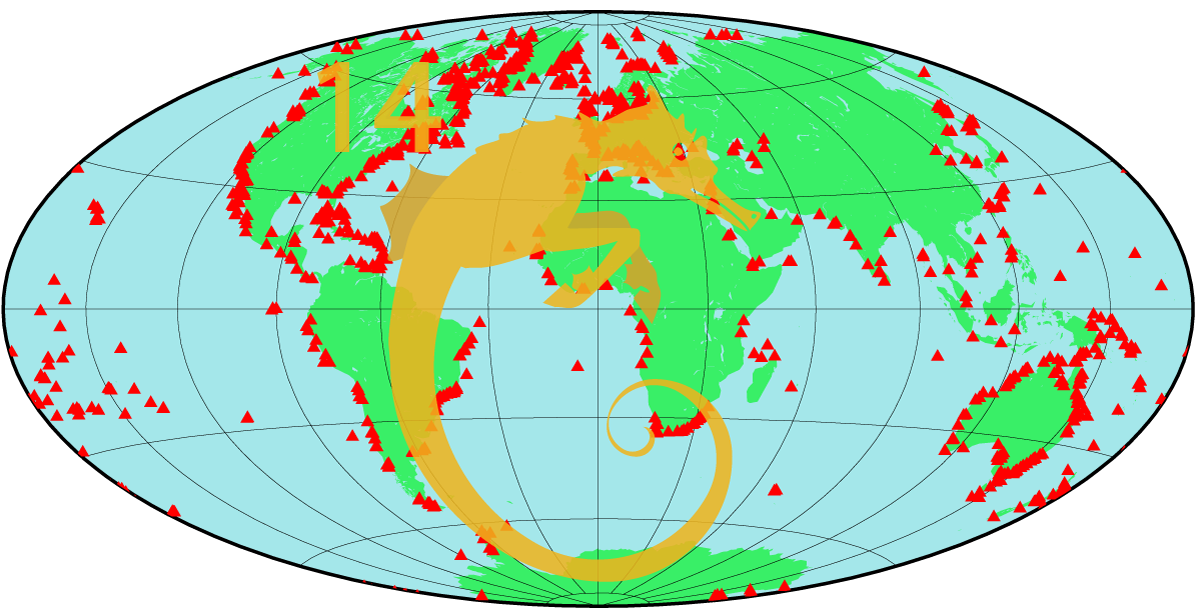
ΔR values were calculated from the difference in the 14C age of known-age, pre-nuclear marine samples and the current marine calibration dataset ( Heaton et al., 2020). Samples from depths greater than 75 m were not included in the database, because the marine model ages in the marine calibration dataset are only valid for the surface mixed layer. In cases where the 14C measurements were originally reported as δ14C, Δ14C, or pMC values, we recalculated the conventional 14C age, correcting for isotopic fractionation if that had not been done previously.
When selecting which ΔR values to use, the feeding habit of the organisms should be considered. Suspension or filter feeders are composed of carbon in the water whereas some types of deposit feeder may take up old carbon from the sediment or rocks. The feeding habit is shown by different colored push pins. Also note that migratory animals (designated by white push mins) may not represent the region where the samples were found. This information can be tabulated by selecting the feeding option box before retrieving the data.
If reservoir correction data has been overlooked, we would appreciate receiving the reference or a personal communication so it may be included. Please note that we only use known collection year samples not paired marine and terrestrial archaeological samples p.j.reimer@qub.ac.uk
